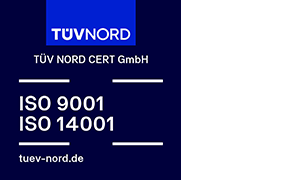Impregnation under Atmosphere
When impregnating under atmosphere, the windings are saturated by flooding the workpiece with the impregnating agent. The workpiece to be impregnated is flooded in an impregnation chamber in which the workpiece is completely submerged in the impregnating agent.
Vacuum-Impregnation and Vacuum-Pressure-Impregnation (VPI)
Air inclusions in the windings generally reduce the impregnation effect, since the impregnating agent cannot saturate the windings unhindered, but must first displace the trapped air. This becomes even more difficult the tighter the winding and the finer the wires are. In vacuum impregnation, the workpiece to be impregnated is therefore first placed under vacuum and then flooded with the impregnating agent.
Subsequently, the impregnation chamber is vented; the atmospheric pressure on the surface level of the impregnating agent ensures that the impregnating agent continues to penetrate the windings. In vacuum pressure impregnation, the impregnation vessel is even placed under overpressure after a certain time in order to further force the penetration of the impregnating agent through the workpiece.
Depending on the application purpose, our impregnation systems have different equipment features, including
- vacuum pre-treatment of the impregnating agent
- sedimentation-free preparation of the impregnating agent even when using fillers and colorants
- service life extension of the impregnating agent in the storage tank through coolable double-jacket design; alternatively: coolable and heatable version for storage and impregnation vessels
- vacuum pre-treatment of the parts to be impregnated, if necessary also vacuum drying
- control and monitoring equipment for semi or fully automatic operation
- conveying, drying and curing systems
- compliance with environmental and occupational safety requirements, e.g. through encapsulation and extraction of harmful vapors


